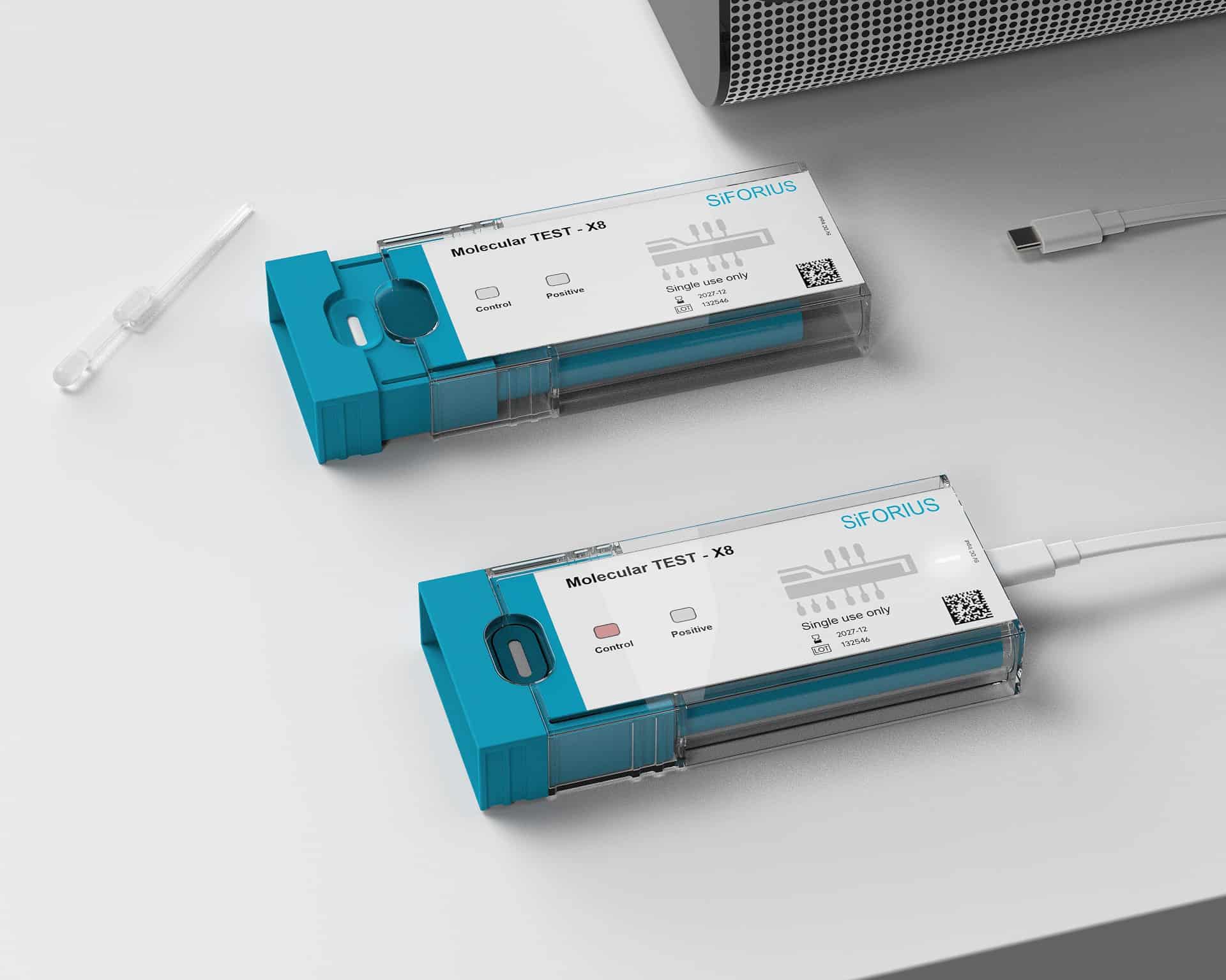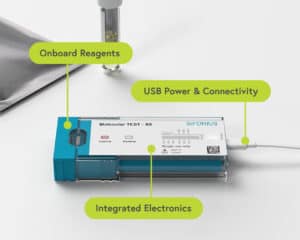
Insights
Smart consumables are simplifying Point of Care (POC), and here’s what you need to know.
Posted by: Rolf Wolters on December 20, 2022
Categories: Diagnostics, Featured, Market Trends, Medical Devices, Point of Care, Product Development, Product Innovation, Regulatory

The Point of Care (POC) medical device market has garnered a great deal of attention in recent years as the demand for rapid and accurate tests has skyrocketed. Testing that had previously been reserved for centralized laboratories has moved closer to the patient, thereby shifting typical users from laboratory technicians to caregivers in doctors’ offices and pharmacies, to the patients themselves in their own homes.
With this increased access to technology, medical device design requirements have also changed. Notable trends in the market include:
 Enhanced embedded functionalities
Enhanced embedded functionalitiesThe use of novel materials and manufacturing techniques is enabling higher performance in smaller footprints, at a lower cost.
New smart are emerging to address these needs by bringing more functionality into a single-use consumable than had previously been customary. While embedding sensors and active elements into consumables isn’t new, the extent of the functionality being designed into the consumable is ever increasing. Some new and innovative designs are now incorporating, for example, lenses integrated into plastic molded parts, electronics utilizing printed conductive paint traces, and even disposable pumps designed directly into the consumable body to drive reagents through the fluidics. In some cases, smart consumables are eliminating the need for a durable all together, becoming synonymous with single-use devices. By example, what would have seemed unthinkable just a few years ago, several single-use PCR devices have recently gained FDA clearance for COVID testing.
While these embedded functions add modest cost-per-use and may preclude the adoption of smart consumables in all applications, advantages are clear in certain markets. For instance, new liquid biopsy and cellular detection technologies can command several hundred to several thousand dollars per test, and as such, the cost of the consumable can be higher because it is still a small percentage of the cost of the test. Consumables costing USD $20 in production quantities can provide attractive margins when the test cost is greater than USD $500.
 Some companies appear to be employing a smart consumable product strategy in cases where they wish to make their technology available to a wider customer base. Assuming the cost structure makes business sense, the risk of adoption for consumers drops significantly by removing the capital outlay requirement for a device. This could be compelling for procurement decisions in small doctors’ offices, pharmacies, or even drug stores that offer the product for at-home use.
Some companies appear to be employing a smart consumable product strategy in cases where they wish to make their technology available to a wider customer base. Assuming the cost structure makes business sense, the risk of adoption for consumers drops significantly by removing the capital outlay requirement for a device. This could be compelling for procurement decisions in small doctors’ offices, pharmacies, or even drug stores that offer the product for at-home use.
Smart consumables are gaining traction, making the coming years very exciting in the diagnostics medical device design space as developers will need to respond to the new requirements and demand.
Invetech is a recognized leader in medical device design, engineering, and manufacturing. Smart consumable projects are steadily increasing at Invetech and are welcomed by our design team at our consumable design center-of-excellence in San Diego, CA. Contact us to learn more of our smart consumable design expertise or discuss your next diagnostic development and manufacturing project.
The invetech site works on all modern browsers with legacy support back through Internet Explorer 9. Please update by going to the link below.
Update Browser